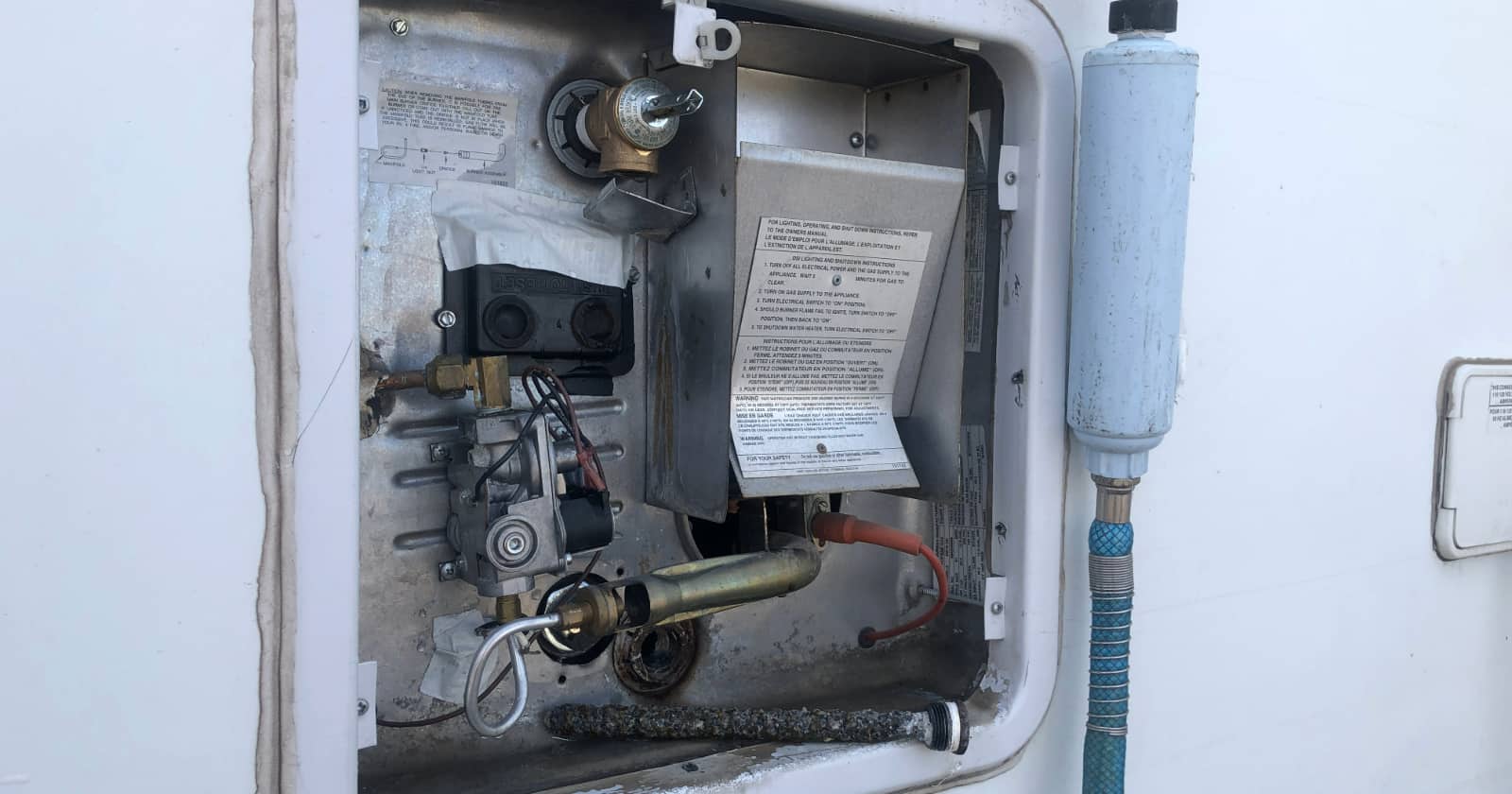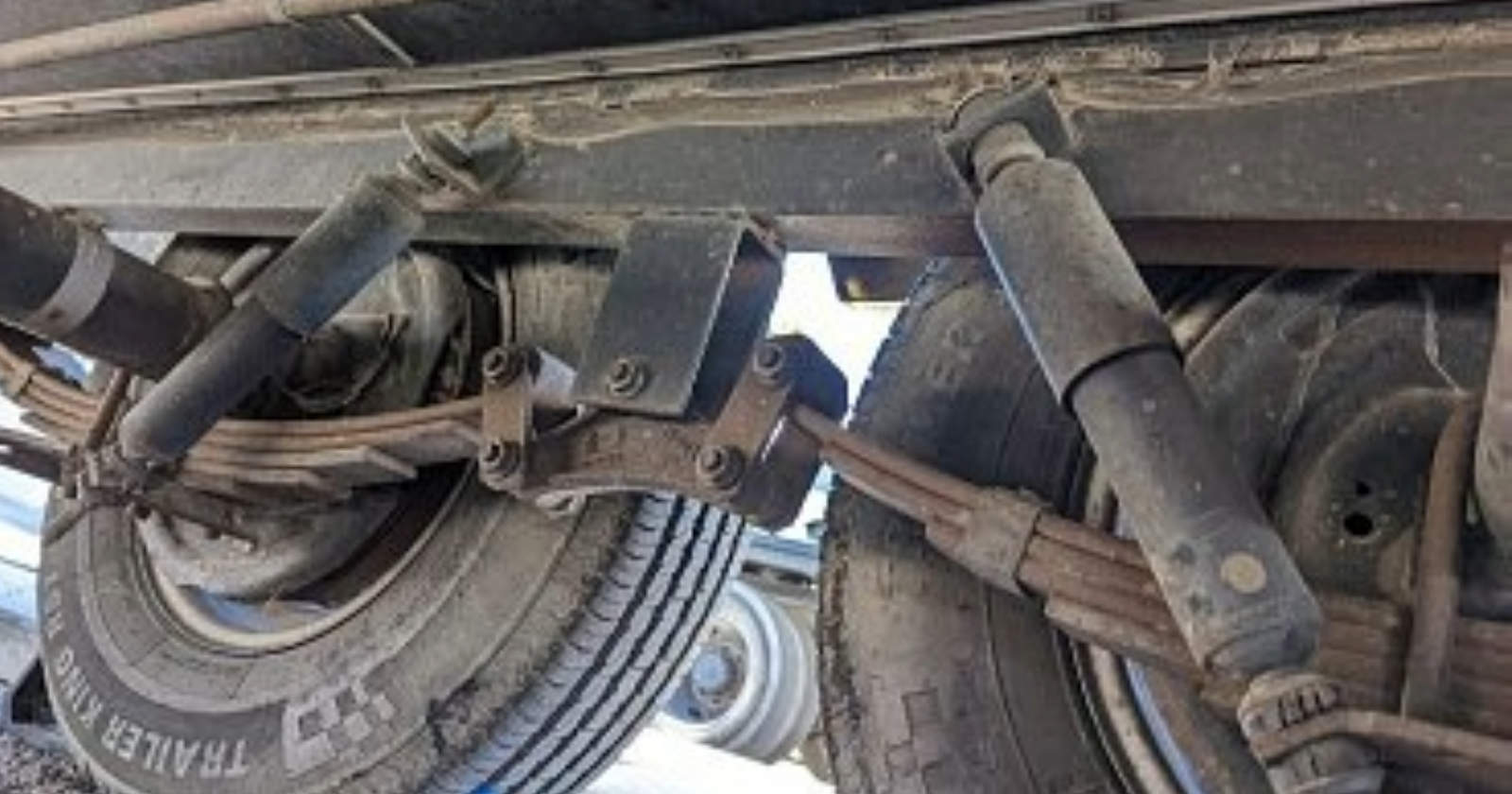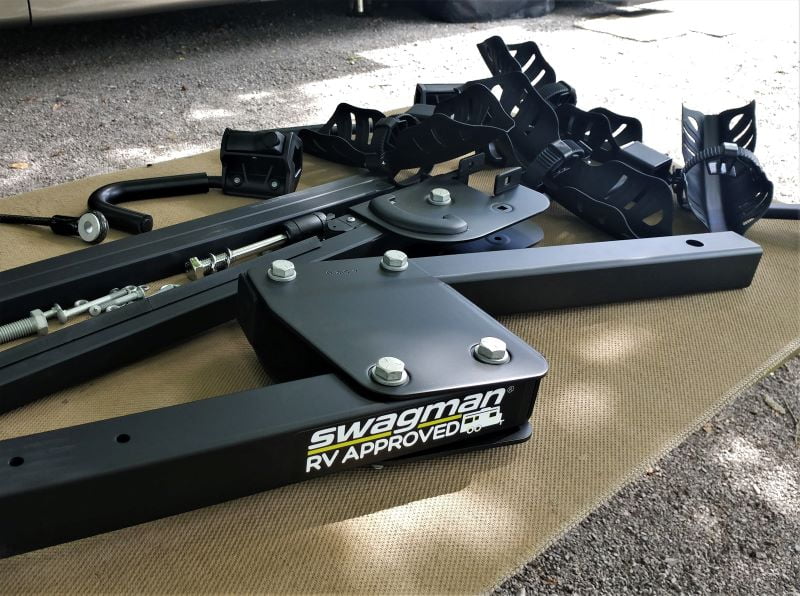
Swagman Offers Sturdy RV Bike Rack
We recently made a significant upgrade to the bike-carrying capability of our RV with a Swagman RV Approved Bike Rack. Several of our friends with RVs have had bike rack failures and I didn’t want to join them.
Our bicycles ride in the space between our RV and our tow car. If our bike rack were to fail, it would cause lots of damage to our car. After hearing these horror stories, we knew we needed a better (stronger) RV bike rack. This concern led me to upgrade both our bike rack, and tow hitch assembly.
Not every RV bike rack is strong enough to be used on the back of an RV.
Scott Fox – FoxRVTravel.com
RV Bike Rack Strength
Robust is the word that I keep coming back to when describing our Swagman RV Approved Bike Rack. I was able to easily stand on the mounted but empty bike rack. My weight was applied to the very end of the rack as far from the car as possible, which puts maximum stress where the rack connects to the hitch receiver. I would not have stood on our old bike rack, which would have likely failed. Standing on the rack is a nice test, but it only creates a static weight load. The weight a bike rack has to take is a dynamic load.
Dynamic Load
The problem with a bike rack on the back of the RV is that it is not just supporting a static weight. Rather, the bike rack moves up and down and sways back and forth slightly while you drive. This means that even though you don’t put two hundred pounds of bikes on the rack, the rack can be subject to more than a two hundred pound static load.
Repeated dynamic stress is what causes bike racks to fail. More than one RVer has found their bikes dragging on the road behind their RV. For me, they wouldn’t drag on the road but rather fall into my car. This would mean thousands of dollars of damage to my car.
Greater Stress on Travel Trailers
For a bike rack installed on the back of a travel trailer, the dynamic stress can get extreme. The issue here is that most trailers do not have shock absorbers. The ride at the rear bumper of my RV is not nearly as harsh as the ride on the back of a trailer. Both motorized RVs and trailers have lots of distance between the rear tires and the rear bumper. This distance creates a large moment arm (lever). As the moment arm increases, so does the movement created increased weight (dynamic weight).
Often, travel trailers and fifth-wheels do not even have a hitch receiver. Sometimes those RV owners will attach a bike rack to the trailer bumper. This is a bomb looking for a place to explode. Trailer bumpers are not strong enough to support a bike rack. If you don’t have a receiver attached to the frame of the trailer, don’t attach a bike rack to your trailer.
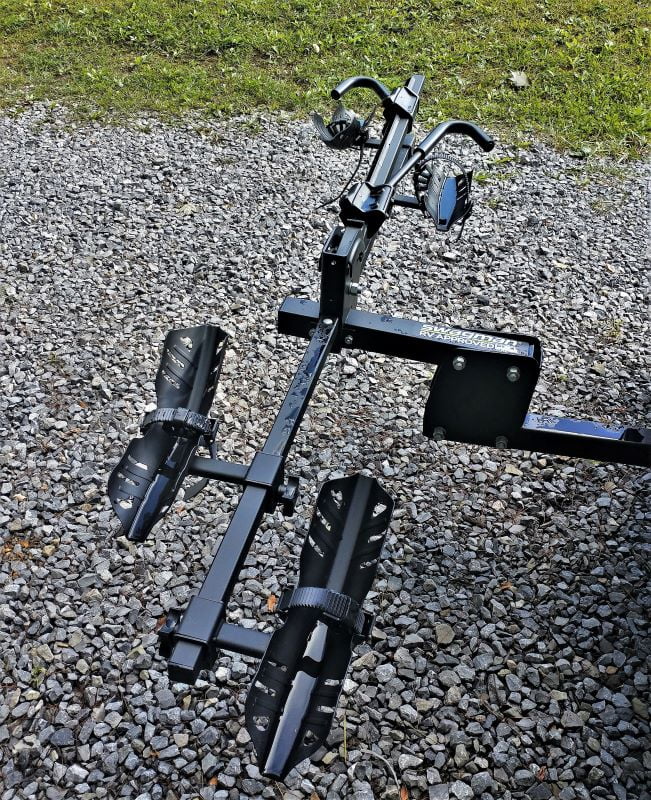
RV Bike Rack Construction
In the above picture, you can see how well the Swagman RV Approved Bike Rack is constructed. The two-inch steel support tubes are clamped between steel plates using grade five bolts. I installed the bike rack on our car just for this picture. It made a much better picture without the distracting towing equipment. We use the rack both on our car and on the RV. It is easy to switch between the two when we want to put the bikes on the back of the car.
The tire cradles are installed and ready to hold the bicycles. Across the tire cradles, you can see the nylon straps that hold the tires into the cradles. The upright support is in the lower/stowed position. On the upright are two hooks that clamp the bicycles down to prevent them from shifting towards or away from the RV. These hooks ride a notched rack so that all you need to do to release the bikes is push a button and raise the hooks.
RV Bike Rack Mounted
We almost always travel with our bikes covered. We also put the covers on the bikes when we are not using them in the campground. When traveling with the bikes on the back of our car, we do not cover them for two reasons. First, on our car, the covers create a sail that catches wind and this would ruin the cover. Wind isn’t a problem on the back of the RV. Our RV does a great job blocking the wind as we drive down the road. The biggest reason we don’t use our covers on the back of our car is that the covers block the view of the brake lights and license plate.
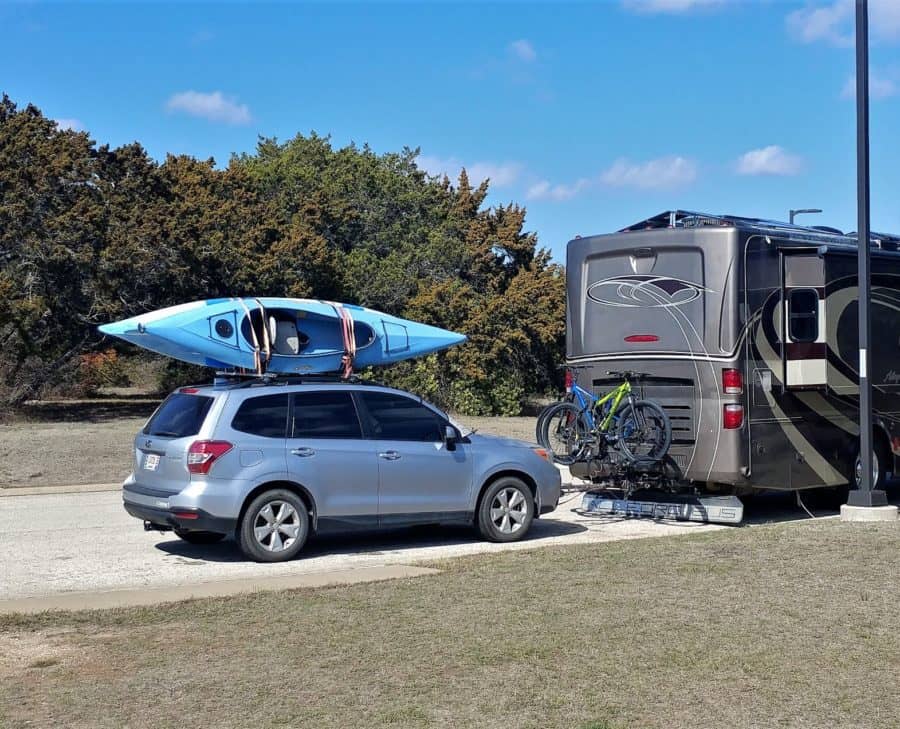
Here is a picture of the bikes on the rack between our RV and the car. The bikes need to be far enough away from the RV so that I can still check the engine compartment and close enough to the RV so that the car can turn as it follows the RV through the turns. I have tested the position of the car, behind the bikes making a minimum radius turn, and found that my minimum clearance between the bikes and the car is about ten inches.
Using a double-hitch receiver
I use a double hitch receiver to make the bikes ride between the RV and the car. The bikes ride on the upper hitch receiver. I attach the Roadmaster Falcon All Terrain Tow Bar to the lower hitch receiver. I couldn’t use my old double hitch receiver because it wasn’t tall enough. With the old receiver, I didn’t have enough room between the two receivers of the double hitch. There was plenty of room to use the tow arms, but there wasn’t enough room to stow the tow arms.
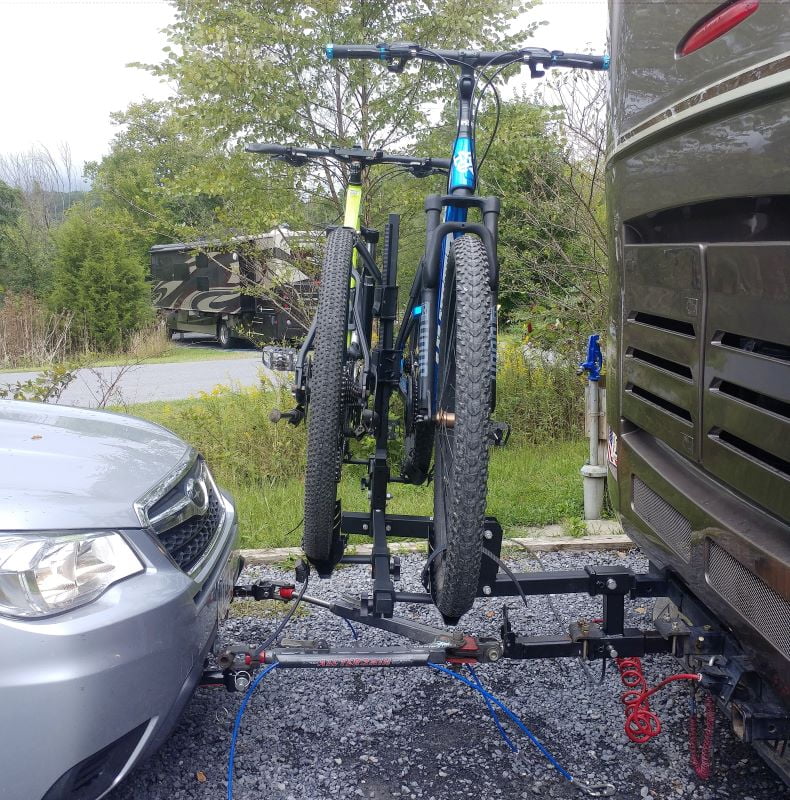
Here, I’ve attached the car to the tow arms. The Roadmaster Falcon All Terrain Tow Bar is not yet extended to full length. The purpose of this picture was to measure how far the car would be away from the bikes before towing the car behind the RV. If for some reason the tow arms collapsed into their stow position, could the car impact the bike rack? I don’t think so. So far everything looks like it will work well.
Last January I wrote an article on how we tow our car behind our RV. This article shows detailed pictures and explanations of our Roadmaster Falcon All Terrain Tow Bar setup. You can check it out at this link: How to tow – what we tow
Mounting the bikes on the rack
When mounting the bikes on the car, we have the bikes facing the opposite direction. It adds balance to the rack, evenly weighting both sides. Yes, the bikes stick out slightly on both sides of the car. This doesn’t happen on the back of the RV.
The spread of the bikes is important even though it looks a little wide. This spread in opposite directions is so that the bike rack vertical hooks engage the bikes at the lowest position on the frame. On bikes that have a step-through frame, you need to use a crossbar from the seat tube to engage the vertical hooks.
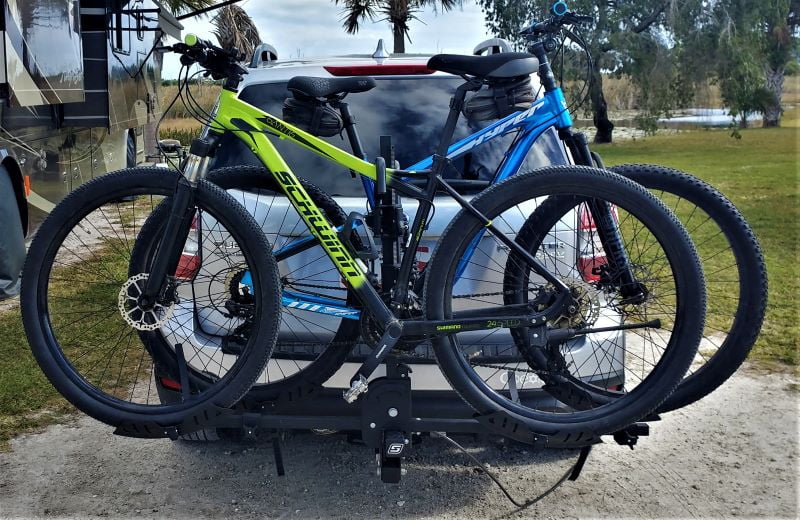
Where the solid construction really shines
On our old bike rack, we had a problem with the bike rack bouncing up and down when it was being used. To keep this from moving, I used the steel plate and U-bolt with large nuts on the top to prevent this movement.
This clamp solved the bouncing problem by forcing the bike rack to stay at the bottom of the receiver. The clamp worked fine but did create a different problem. When I wanted to use my old bike rack on the car, I had to pull both the hitch pin bolt out of the rack and then also loosen the U-bolt clamp to remove it from the RV. Then when I put the bike rack on the car, I had to install the U-bolt clamp on the car to prevent the rack from moving while on the car.
Our new Swagman RV Approved Bike Rack is made with enough precision and engineering that it has a threaded hitch pin and does a great job at preventing movement, making my U-bolt clamp unnecessary. This hitch pin is called a Locking Anti-Rattle Threaded Hitch Pin. I was a doubter, but it works great. Additionally, the threaded hitch pin has a lock at the end of the pin to prevent someone (with a big wrench) from stealing the rack.
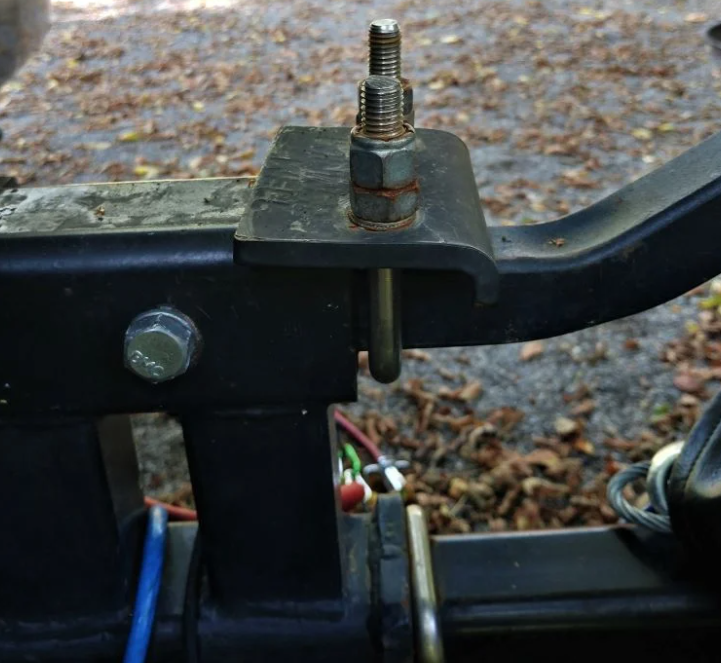
Built-in cable lock
The lock that secures the hitch pin to the receiver doubles as a built-in lock securing the (included) locking cable to the rack. To use this feature, thread the cable lock through the bikes with both ends of the cable facing forward. Then pass the bolt end of the cable through the loop end of the cable. Place the bolt end of the cable on the hitch pin and install the hitch pin lock to the end of the hitch pin.
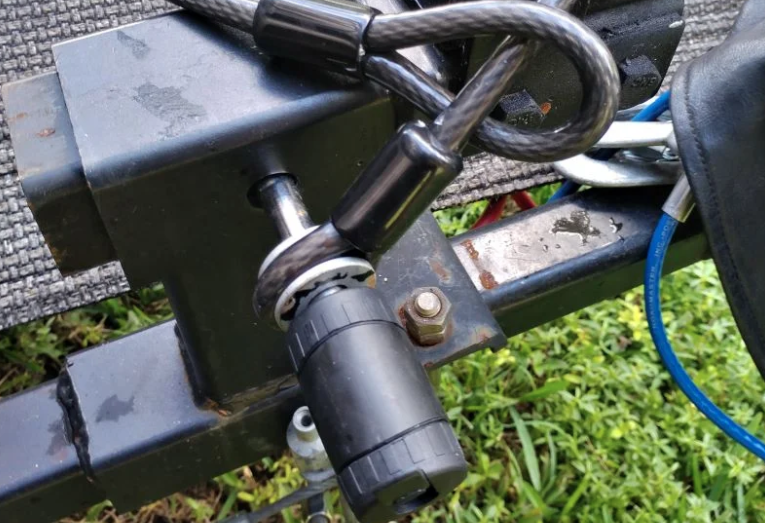
Long Term Testing
It took me a couple of months to get a tall double receiver hitch. Until then I used the Swagman Bike Rack on our car, I started using the bike rack on our RV after I got the new taller double hitch receiver. Overall I have been using it both on our car and RV for six months. Both with and without bikes installed.
So far, we have logged more than a thousand miles with the bike rack on our RV and three thousand miles overall use for both our RV and car. About half of the miles on our car, the bike rack was loaded with the bikes. In the other half of the miles, the bike rack was empty. Other than dirt and some water spots, it looks just like it did when it came out of the box. I expect the RV bike rack to outlive the bikes, car, and RV.
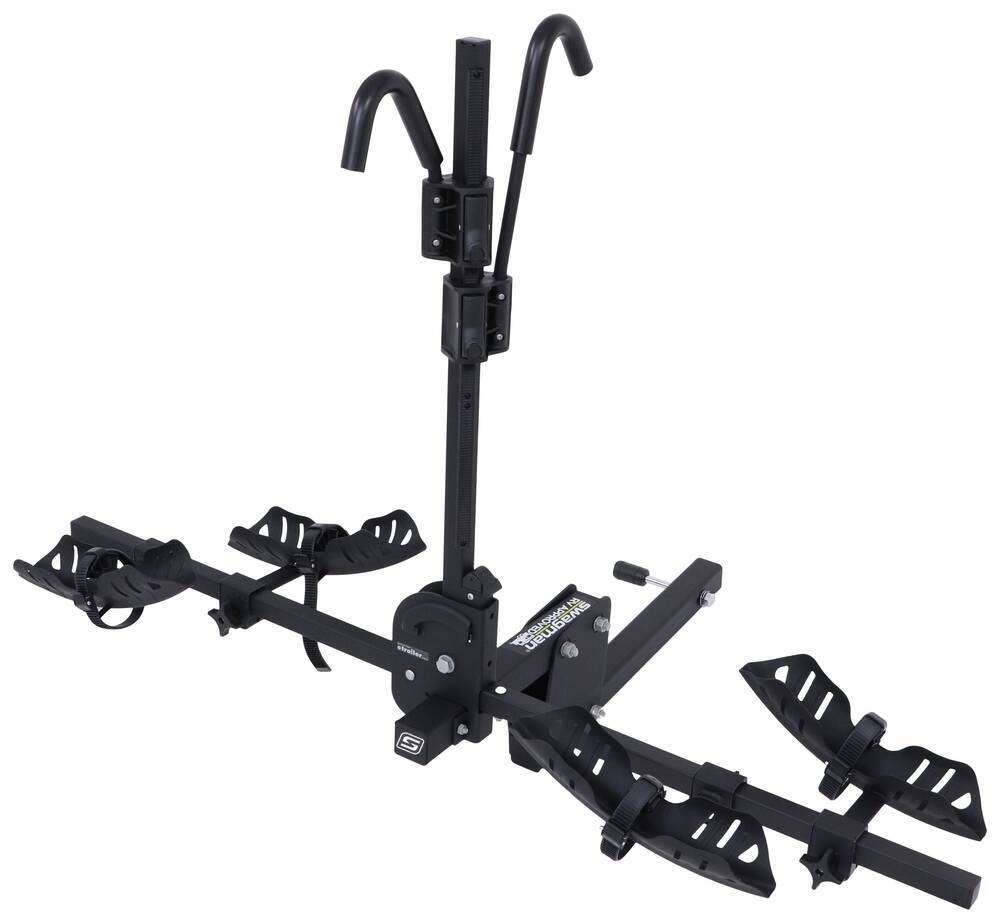
Conclusion
The moral of the story is, don’t take anything for granted. Do your own measuring, testing, and investigating. Research, read reviews, and plan carefully. Trying to save a few bucks on an RV bike rack could result in failure and damage that could cost thousands of dollars worth of damage. It’s simply not worth it.
eTrailer is a great source for this type of thing because they typically have loads of reviews, pictures, specs, and even offer the installation manual right there on the site so you can decide ahead of time if you can handle the project. Like tires and brakes, an RV bike rack is one place you simply can’t afford to scrimp on.
View an installation of a similar RV bike rack:
One of the best parts about RVing is engaging with the community of traveling enthusiasts. iRV2 forums allow folks to chat with other RVers online, and get other perspectives on everything RVing, including products, destinations, RV mods, and much more.
Scott Fox is a retired Navy pilot and flight instructor that has been traveling full-time in his RV for more than four years. Scott’s first experience with RVing started as a youth in a small travel trailer with his family. Overall his camping experience spans well more than fifty years. FoxRVTravel.com shares stories and explains some of the more technical aspects of RVing. Both this article and FoxRVTravel.com are freely given without financial compensation by this publisher or by anyone else in any way. He explains that he just wants to help people get the straight story with no strings attached.
Related articles:

